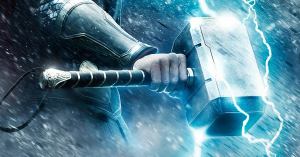Before Marvel Studios gave them all a single home with the MCU, there were 16 superhero movies of widely varying quality released from the late ’90s to the mid aughts. And, before Spider-Man: No Way Home and Deadpool & Wolverine semi-incorporated most of them into that shared single home, the movies and the characters within them looked to be relics of a cinematic era past. How have they aged? For the most part, what worked then works now and what didn’t then remain as such. The Blade saga still has two solid entries and a rough trilogy-capper. The same goes for Sam Raimi’s Spider-Man trilogy and the initial three X-Men films. Even with the improvements provided by the Director’s Cut, Daredevil is a bit of a slog, Ang Lee’s Hulk plays like a focus-deprived art project, the only thing that really works about The Punisher is Tom Jane’s lead performance, and both Elektra and Ghost Rider are hard to sit through.
Videos by ComicBook.com
But what about Tim Story’s duo of poorly reviewed Fantastic Four movies? Is the only complement that can be granted them the fact they’re better than the disastrous Fant4stic? Now, with a new Fantastic Four movie on the horizon for 2025, let’s take a look back at Story’s two films feature Marvel’s First Family to see how kindly (or not) the years have treated them.
The Pros

The biggest pro of Fantastic Four and Fantastic Four: Rise of the Silver Surfer is casting. At least, partially. Michael Chiklis was a perfect choice for Ben Grimm/Thing as was Chris Evans for Johnny Storm/Human Torch. Both bring their all to the roles, with the former nailing the kind nature and heartbreak of his character while the latter sells Johnny’s excitement and makes even the lames jokes work as well as they could. As for the second films’ additions to the line-up, the one that truly mattered was the one they got right, as both Doug Jones and Laurence Fishburne were ideal selections to bring the Silver Surfer to life.
All that said, while Jessica Alba’s performances were slightly underrated (she does the most with what little character she has), Ioan Gruffudd feels out of place in both adventures. As for Julian McMahon, he’s effective in the first film but goes a bit too hammy in Silver Surfer. But, given the strength of their two cohorts’ performances, acting tips towards the films’ favor. This is especially true when Evans and Chiklis trade banter.
Beyond the casting, there is also the matter of pacing. For those seeking check-your-brain-at-the-door Saturday afternoon entertainment, pacing is in the plus column for both films, especially the first. Neither of them has many scenes that don’t actively propel the narrative forward, which is technically a good thing. Even still, that comes at a price, which we’ll get to soon.
[RELATED: Original Fantastic Four Star Would “Jump at the Chance” to Join the MCU]
The Cons

As for what doesn’t really work, there’s the issue of being dated. Both movies reference the pop culture standouts of their time. In some cases, this almost works because those standouts have continued to, well, stand out. For instance, Johnny’s reference to the MasterCard “Priceless” commercials in the first film is too on the nose, even if it’s not entirely lost on the audience considering those ads (which started in 1997) continue to this day. In general, though, referencing the pop culture of a film’s time only serves to play as desperate to score a response from the audience at the time of initial release and thus be less effective now.
As mentioned, pacing is a mixed bag element for both films which also makes it a con (in addition to being a pro, just for different reasons.) On one hand, movies that clip along retain the audience’s attention, which is good for a summer blockbuster. But in this case, it comes at the expense of crafting deep characters. For example, in the first film, the characters receive their powers less than 15 minutes in. The viewer knows next to nothing about them by that point save for the facts that Ben and Reed are friends, Reed and Susan have dated, and Susan and Johnny are siblings.
Character isn’t always a superhero movie’s primary focus, but there’s a reason the same era’s Spider-Man 2 is so good. That reason is its focus on its title characters personal struggles. And not just on Peter Parker’s personal struggles, but on Doctor Octopus’ as well. Comparatively, the Fantastic Four movies’ attention to character is outright hollow, which is ultimately what can be said about the movies as a whole. When it comes to the initial Marvel cinematic lineup, they’re firmly in the middle which means that they haven’t exactly stood the test of time, but are still worth a watch if you have the time.









